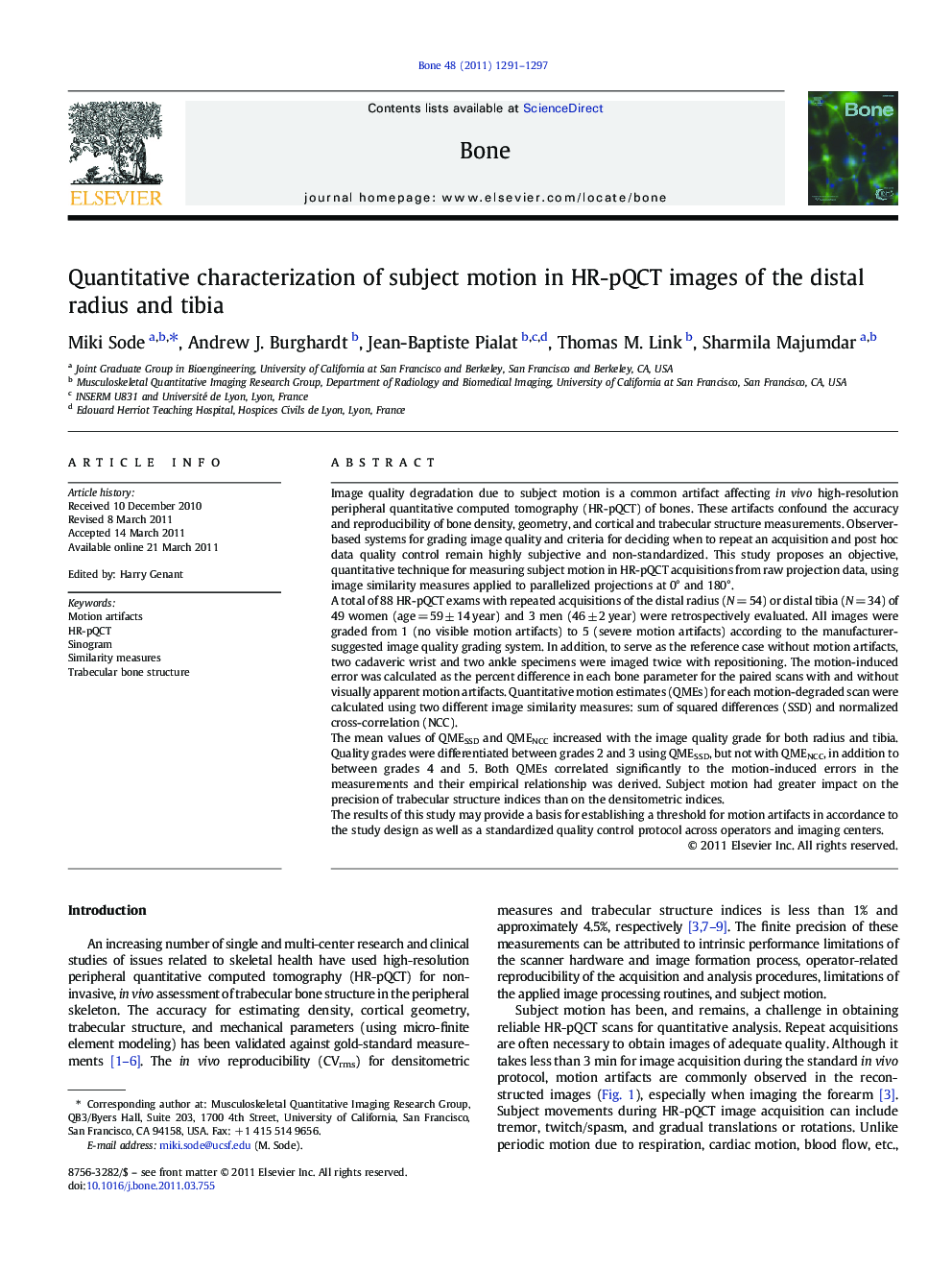| کد مقاله | کد نشریه | سال انتشار | مقاله انگلیسی | نسخه تمام متن |
|---|---|---|---|---|
| 2779977 | 1153288 | 2011 | 7 صفحه PDF | دانلود رایگان |

Image quality degradation due to subject motion is a common artifact affecting in vivo high-resolution peripheral quantitative computed tomography (HR-pQCT) of bones. These artifacts confound the accuracy and reproducibility of bone density, geometry, and cortical and trabecular structure measurements. Observer-based systems for grading image quality and criteria for deciding when to repeat an acquisition and post hoc data quality control remain highly subjective and non-standardized. This study proposes an objective, quantitative technique for measuring subject motion in HR-pQCT acquisitions from raw projection data, using image similarity measures applied to parallelized projections at 0° and 180°.A total of 88 HR-pQCT exams with repeated acquisitions of the distal radius (N = 54) or distal tibia (N = 34) of 49 women (age = 59 ± 14 year) and 3 men (46 ± 2 year) were retrospectively evaluated. All images were graded from 1 (no visible motion artifacts) to 5 (severe motion artifacts) according to the manufacturer-suggested image quality grading system. In addition, to serve as the reference case without motion artifacts, two cadaveric wrist and two ankle specimens were imaged twice with repositioning. The motion-induced error was calculated as the percent difference in each bone parameter for the paired scans with and without visually apparent motion artifacts. Quantitative motion estimates (QMEs) for each motion-degraded scan were calculated using two different image similarity measures: sum of squared differences (SSD) and normalized cross-correlation (NCC).The mean values of QMESSD and QMENCC increased with the image quality grade for both radius and tibia. Quality grades were differentiated between grades 2 and 3 using QMESSD, but not with QMENCC, in addition to between grades 4 and 5. Both QMEs correlated significantly to the motion-induced errors in the measurements and their empirical relationship was derived. Subject motion had greater impact on the precision of trabecular structure indices than on the densitometric indices.The results of this study may provide a basis for establishing a threshold for motion artifacts in accordance to the study design as well as a standardized quality control protocol across operators and imaging centers.
Research highlights
► Both QMESSD and QMENCC increased with the image quality grade.
► The quality grades were differentiated with QMESSD more than QMENCC.
► Both QMEs correlated to the motion-induced errors in the measurements.
► Subject motion had greater impact on trabecular structure indices.
► A non-subjective to quantify subject motion in HR-pQCT acquisitions was proposed.
Journal: Bone - Volume 48, Issue 6, 1 June 2011, Pages 1291–1297